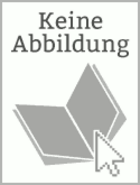Detailansicht

Mass Spectra of Designer Drugs
Including Drugs, Chemical Warfare Agents, and Precursors, 2 Bde, Mass Spectra of Designer Drugs 2007 - Mass Spectra of Designer Drugs 2008 - Mass Spectra of Designer Drugs 2009
Rösner, Peter/Junge, Thomas/Westphal, Folker et al
ISBN/EAN: 9783527307982
Umbreit-Nr.: 2084214
Sprache:
Englisch
Umfang: XX, 2067 S.
Format in cm:
Einband:
Keine Angabe
Erschienen am 11.01.2007
Auflage: 1/2007
- Zusatztext
- Based on the authors' several decades of professional experience, this unique data collection is tailor-made for criminal and forensic investigators. It contains 8,800 mass spectrum records obtained from 4,379 compounds categorized as either designer or medicinal drugs, chemical warfare agents or explosives. It even covers those substances yet to be recorded by the police, but which are likely to be encountered by crime prevention and investigation authorities, in both the areas of illicit drugs and homeland security. The perfect companion for users of the Roesner database, this print edition features a wealth of additional data not contained in the online version, such as U.S. and U. N. legal category information, chromatographic data and mass spectrum quality and similarity indices.
- Kurztext
- Based on the authors' several decades of professional experience, this unique data collection is tailor-made for criminal and forensic investigators. It contains 8,800 mass spectrum records obtained from 4,379 compounds categorized as either designer or medicinal drugs, chemical warfare agents or explosives, and also includes important precursor substances. Its impressive coverage thus encompasses virtually every substance that is likely to be encountered by crime prevention and investigation authorities, in both the areas of illicit drugs and homeland security. The perfect companion for users of the Rösner database, this print edition features a wealth of additional data not contained in the online version, such as U.S. and U.N. legal category information, chromatographic data, and mass spectrum quality and similarity indices. All spectra are normalized to the base ion peak and arranged in order of ascending mass. For molecular ions that are much larger than the base ion, expanded spectra of the region around the molecular ion are also included. To account for various types of mass spectrometers commonly in use, spectra obtained with different recording and ionization methods are included. In short: The number one collection of forensic and criminal data for a rapid and fail-safe identification of illicit substances.
- Autorenportrait
- Peter Rösner (born 1944) studied Chemistry at the University of Kiel (Germany). In 1981 he became head of the toxicology department at the state agency of criminal investigation (Landeskriminalamt) in Kiel, where he focuses on drug identification and structure elucidation with GC/MS methods. Since 1992 he has also been a lecturer for mass spectrometry at the University of Kiel. In 2005, Dr. Rösner received the Jean-Servais-Stas Award from the Society of Toxicological and Forensic Chemistry in honor of his outstanding work in forensic sciences. Thomas Junge (born 1959) studied Technical Chemistry at the University of Applied Science of Lübeck (Germany). Since 1985 he has been a specialist for daughter ion mass spectroscopy in the toxicology department at the Landeskriminalamt in Kiel. His contribution was essential in building a mass spectral daughter ion data base for the structure eludication of new designer drugs. Folker Westphal (born 1965) studied Chemistry at the Universities of Hannover and Kiel (Germany), and also holds a degree as Special Chemist for Toxicology from the University of Leipzig. From 1999 to 2004 he worked at the Institute of Legal Medicine in Kiel as forensic scientist. Since 2004 he is leader of the section "Analysis of Drugs of Abuse and Forensic Toxicology" at the Landeskriminalamt in Kiel. Giselher Fritschi (born 1944) studied Chemistry at the Universities of Mainz and Karlsruhe (Germany). After a postdoc year at the University of Marburg he joined the Bundesgesundheitsamt (Federal Health Office) in Frankfurt. In 1978 he changed to the Landeskriminalamt in Wiesbaden as forensic expert for toxicological analysis, focusing on the structure elucidation of new designer drugs.